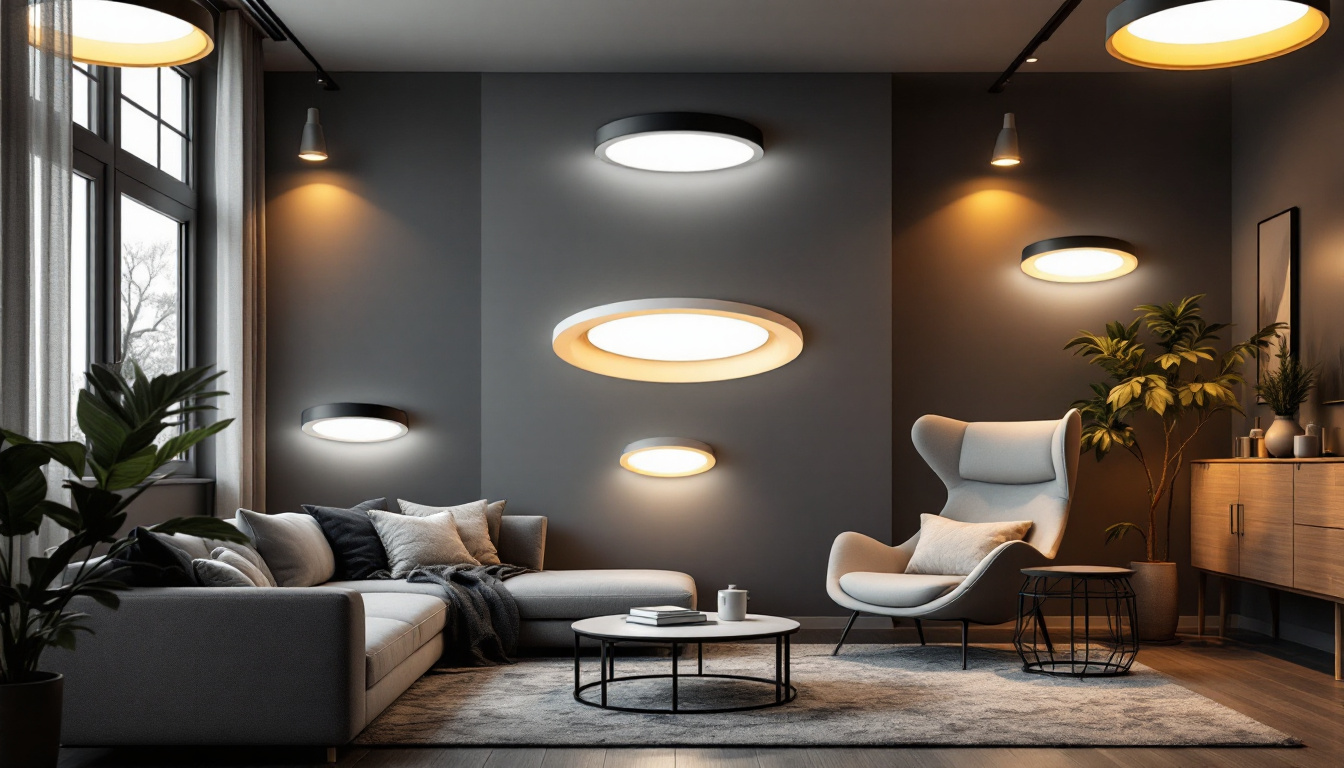
In the world of lighting installation and maintenance, the term “Grip Lock” refers to a critical aspect of securing fixtures and ensuring safety. For lighting contractors, understanding the nuances of Grip Lock is essential to delivering high-quality work. This guide aims to highlight common mistakes that can be made in the process and provide insights on how to avoid them. By being aware of these pitfalls, contractors can enhance their reputation, ensure safety, and improve overall project outcomes.
Grip Lock is not just a technical term; it encompasses a range of practices that ensure lighting fixtures are securely mounted and function effectively. The importance of Grip Lock cannot be overstated, as it directly impacts both safety and performance. When fixtures are improperly secured, the risks of accidents increase, and the longevity of the installation can be compromised. Proper Grip Lock practices not only enhance the safety of the environment but also contribute to the aesthetic appeal of the space, allowing for a clean and professional finish that reflects well on the contractor’s work.
At its core, Grip Lock involves the use of various tools and techniques to secure lighting fixtures in place. This includes the selection of appropriate mounting brackets, the use of secure fasteners, and ensuring that all components are compatible with each other. Understanding the specifications of the fixtures being installed is crucial, as different types may require different approaches to secure them properly. Additionally, it is important to consider the environmental factors, such as humidity and temperature fluctuations, which can affect the materials used in the installation. For instance, outdoor fixtures may require weather-resistant components to withstand the elements.
Moreover, contractors should be familiar with the weight and balance of the fixtures they are working with. Heavier fixtures may require additional support, while lighter ones might need different types of fasteners. A comprehensive understanding of these factors is essential for implementing effective Grip Lock practices. Furthermore, utilizing tools like levelers and measuring tapes can ensure that fixtures are not only secure but also aesthetically aligned, creating a visually pleasing arrangement that meets both functional and design criteria.
Even seasoned contractors can fall prey to common mistakes when it comes to Grip Lock. These errors can lead to unsafe installations, increased liability, and costly rework. Awareness of these pitfalls can help contractors avoid them and ensure a successful project. One frequent mistake is underestimating the importance of pre-installation checks; failing to inspect the mounting surface for integrity can lead to disastrous results. Additionally, neglecting to follow manufacturer guidelines can compromise the effectiveness of the Grip Lock, as each fixture may have specific requirements that must be adhered to for optimal performance.
Another common oversight is the improper use of tools. Using the wrong type of fasteners or inadequate tools can lead to fixtures that are not securely attached, posing a risk to both the installation and the people in the vicinity. It is also essential to ensure that all fasteners are tightened to the correct torque specifications, as over-tightening can damage the fixture or the mounting surface, while under-tightening can lead to loosening over time. By remaining vigilant and educated about these common mistakes, contractors can significantly improve the reliability and safety of their lighting installations.
One of the most significant mistakes contractors make is neglecting proper weight distribution when installing lighting fixtures. This oversight can lead to fixtures becoming unbalanced, which may cause them to tilt or fall over time. Proper weight distribution involves understanding how the fixture’s weight is distributed across the mounting surface and ensuring that it is evenly supported.
Before installation, it is crucial to assess the weight of the fixture. This includes not only the weight of the fixture itself but also any additional components, such as bulbs or decorative elements. Contractors should reference the manufacturer’s specifications for weight limits and recommendations for mounting.
Another common mistake is using inadequate fasteners that do not support the weight of the fixture. Contractors should select fasteners that are rated for the specific weight and type of fixture being installed. Using screws or anchors that are too small can compromise the integrity of the installation, leading to potential hazards.
Manufacturer guidelines are designed to provide essential information on the proper installation of lighting fixtures. Ignoring these guidelines can lead to improper installations, which may void warranties and create safety hazards. Contractors should always consult the manufacturer’s instructions before beginning any installation.
Every lighting fixture comes with its own set of installation instructions. These documents often contain critical information regarding the type of mounting hardware required, the recommended weight limits, and specific installation techniques. Failing to adhere to these guidelines can result in a range of issues, from aesthetic problems to safety concerns.
Using the right tools is just as important as following the manufacturer’s guidelines. Contractors should ensure that they have the appropriate tools for the job, including drills, screwdrivers, and levels. Using makeshift tools can lead to mistakes and compromise the quality of the installation.
Grip Lock is not solely about physical security; it also involves ensuring that electrical connections are safe and secure. Overlooking electrical considerations can lead to short circuits, flickering lights, or even electrical fires. Understanding the electrical requirements of lighting fixtures is essential for any contractor.
Before installing a fixture, it is vital to ensure that the wiring is in good condition and compatible with the fixture. Contractors should check for frayed wires, loose connections, and ensure that the voltage requirements match the fixture specifications. Properly securing the wiring during installation is also crucial to prevent any future issues.
After installation, it is essential to test all electrical connections to ensure they are functioning correctly. This includes checking for proper voltage, ensuring that switches operate as intended, and verifying that there are no electrical shorts. Failing to conduct these tests can lead to safety hazards and customer dissatisfaction.
Safety should always be a top priority for lighting contractors. Neglecting safety protocols can lead to accidents, injuries, and even fatalities. Understanding and implementing safety measures is crucial for both the contractor and the client.
Contractors should always wear appropriate personal protective equipment (PPE) when working on lighting installations. This includes hard hats, safety glasses, gloves, and non-slip footwear. PPE helps protect contractors from potential hazards, such as falling objects or electrical shocks.
Every region has specific codes and regulations governing electrical installations. Contractors must be familiar with these requirements to ensure compliance. Failing to adhere to local codes can result in fines, project delays, and increased liability. Regularly reviewing and updating knowledge of local regulations is essential for any contractor.
Effective communication is vital in any project, especially in lighting installations. Underestimating the importance of communication can lead to misunderstandings, mistakes, and project delays. Contractors should prioritize clear communication with clients, team members, and suppliers.
Before starting a project, contractors should conduct thorough consultations with clients to understand their needs and preferences. This includes discussing the desired aesthetic, functionality, and any specific requirements. By establishing clear expectations upfront, contractors can avoid misunderstandings later in the project.
In larger projects, effective team coordination is essential. Contractors should ensure that all team members are on the same page regarding installation techniques, timelines, and safety protocols. Regular meetings and updates can help keep everyone informed and aligned throughout the project.
Once the installation is complete, many contractors may overlook the importance of conducting post-installation inspections. This step is crucial to ensure that everything is functioning as intended and that there are no safety issues. Skipping this step can lead to problems down the line that could have been easily addressed.
During a post-installation inspection, contractors should check all fixtures to ensure they are securely mounted and functioning correctly. This includes verifying that all electrical connections are secure, testing the functionality of switches, and ensuring that there are no visible defects in the installation.
Conducting a walkthrough with the client after installation is also beneficial. This allows the contractor to demonstrate the functionality of the fixtures, address any concerns, and ensure that the client is satisfied with the work. A thorough walkthrough can enhance client satisfaction and lead to positive referrals.
The lighting industry is constantly evolving, with new technologies and techniques emerging regularly. For lighting contractors, continuous learning and improvement are essential to stay competitive and deliver high-quality work. Embracing a mindset of growth can help contractors avoid common mistakes and enhance their skills.
Contractors should make an effort to stay informed about the latest trends in lighting design, technology, and installation techniques. This can be achieved through attending industry conferences, participating in workshops, and subscribing to relevant publications. Staying updated allows contractors to offer innovative solutions to clients and maintain a competitive edge.
Feedback from clients and team members can provide valuable insights into areas for improvement. Contractors should actively seek feedback after completing projects and be open to constructive criticism. This willingness to learn from experiences can lead to better practices and enhanced client satisfaction.
Grip Lock is a critical aspect of lighting installations that requires careful attention to detail. By avoiding common mistakes and implementing best practices, lighting contractors can ensure safe, efficient, and aesthetically pleasing installations. From understanding weight distribution to adhering to safety protocols, every aspect plays a vital role in the overall success of a project.
Continuous learning and improvement are essential for contractors looking to excel in their field. By staying informed about industry trends and seeking feedback, contractors can refine their skills and enhance their reputation. Ultimately, a commitment to quality and safety will lead to satisfied clients and a thriving business.
In the competitive landscape of lighting contracting, avoiding mistakes related to Grip Lock can set contractors apart from the rest. By prioritizing safety, communication, and continuous improvement, contractors can build a solid foundation for success in their projects.
Ready to elevate your lighting projects with the highest quality materials? Look no further than LumenWholesale, where we provide spec-grade lighting products at unbeatable wholesale prices. Say goodbye to local distributor markups and hello to a vast selection of reliable, high-performance lighting that meets rigorous industry standards. Make your next project a shining example of excellence with the added benefits of free shipping on bulk orders. Don’t compromise on quality or value—discover the best wholesale lighting deals and ensure your installations stand out with LumenWholesale.

Discover the essentials of dimming LED lights with our comprehensive checklist tailored for lighting contractors.

Discover how replacement recessed light covers can transform your lighting projects by enhancing efficiency and aesthetics.

Illuminate your expertise with our comprehensive checklist for solar security lighting.

Discover why UFO LED lamps are revolutionizing the lighting industry for contractors.